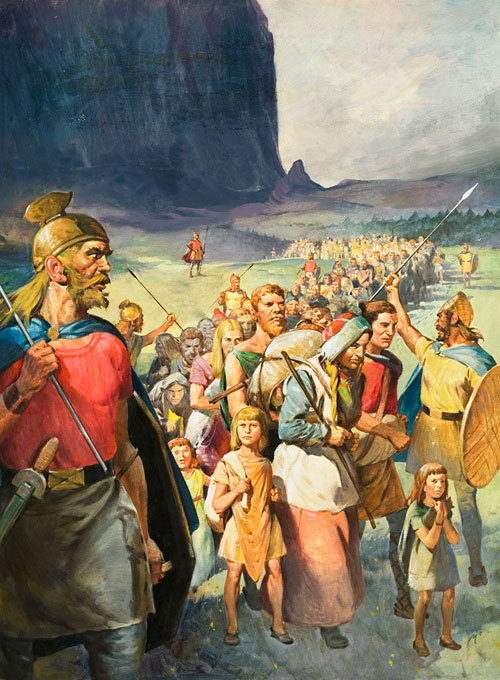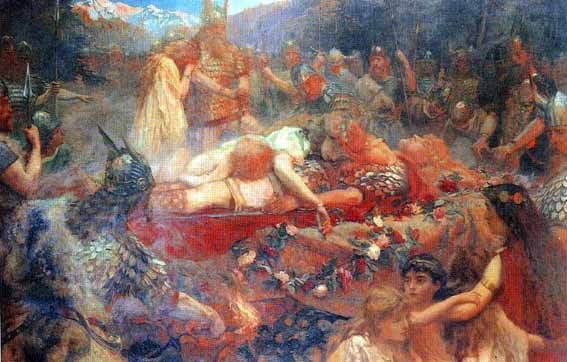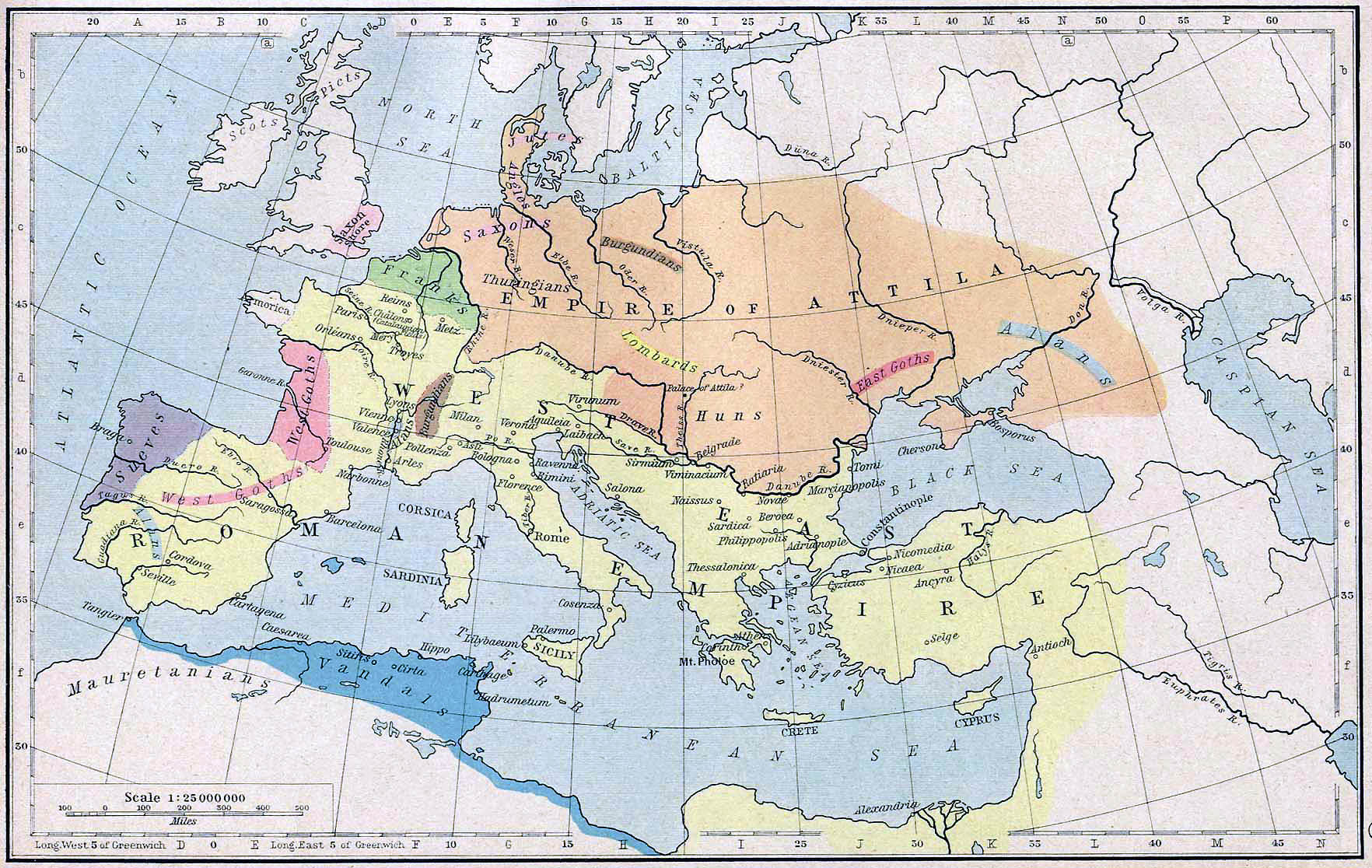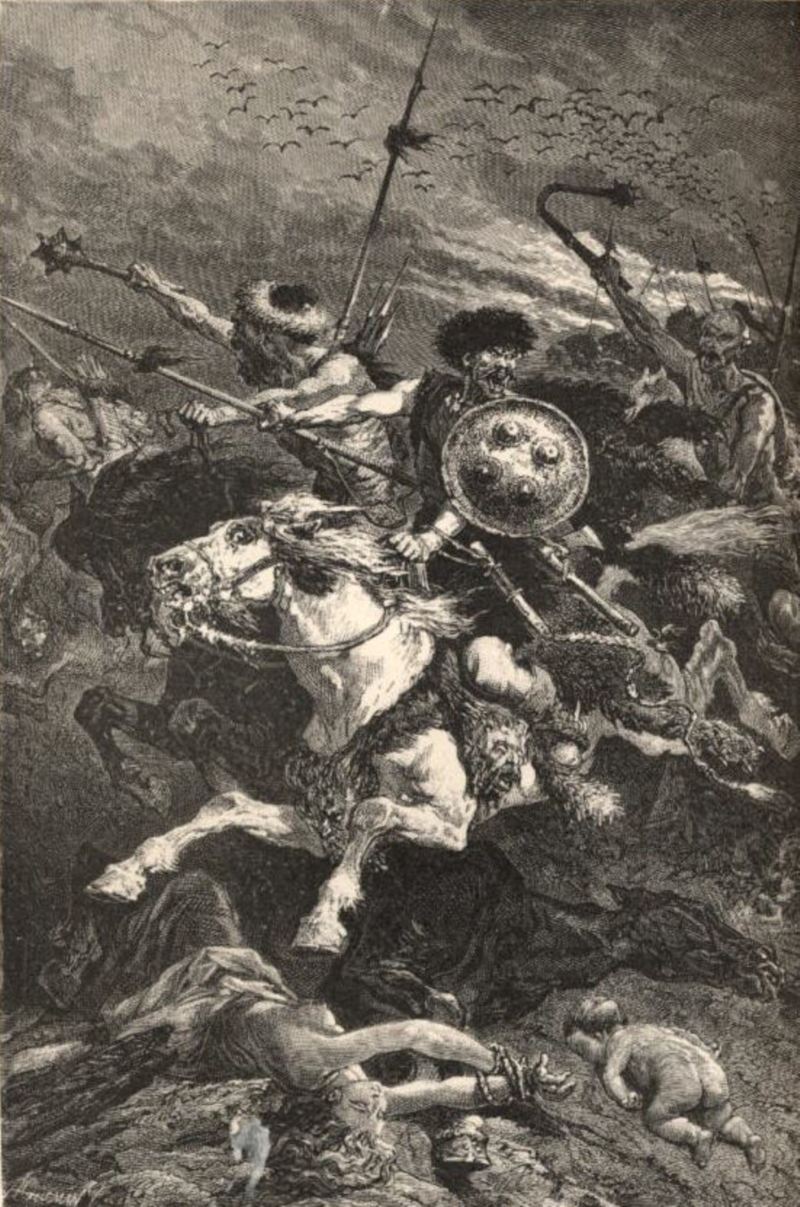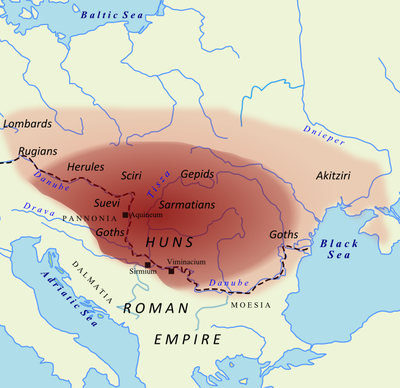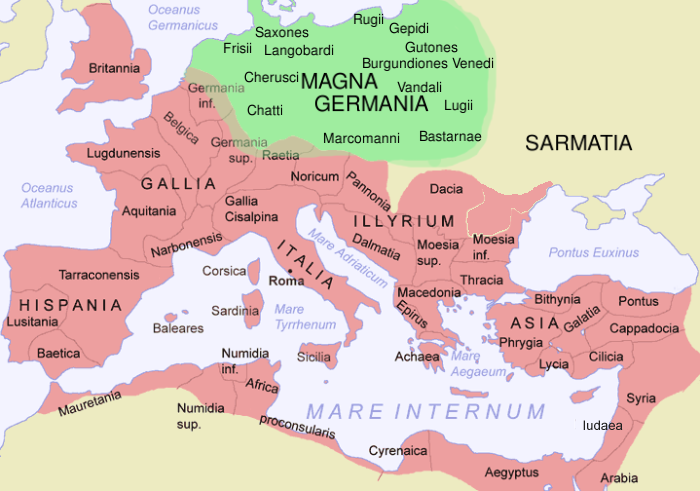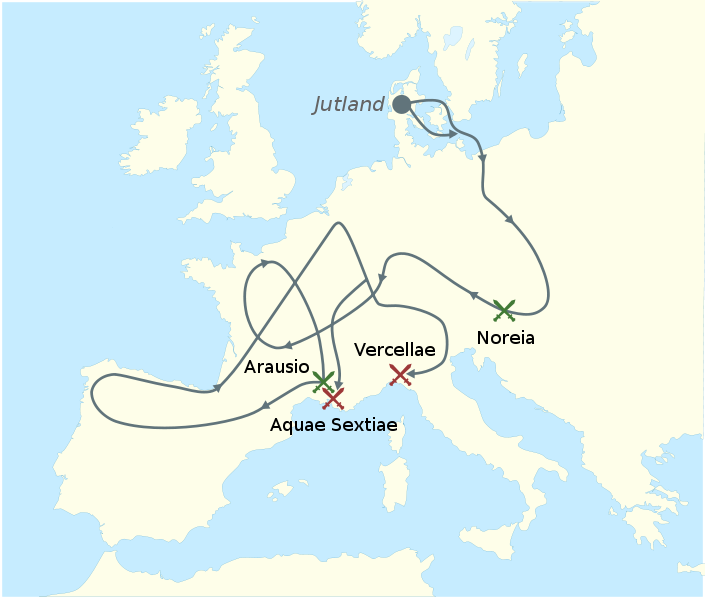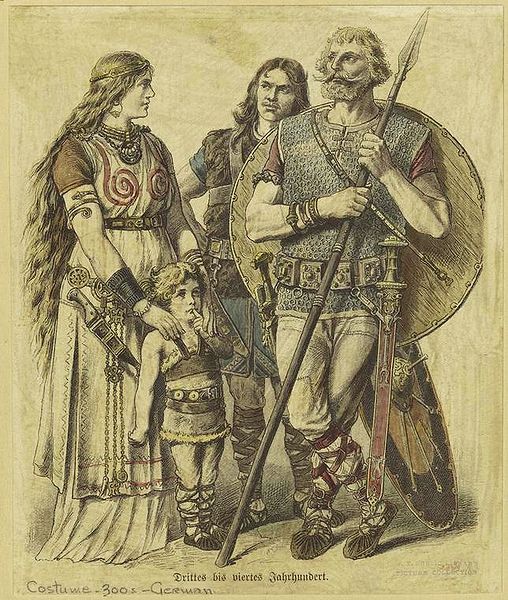Even if we omit what male Spaniards did with their genes in the Americas with countless Indian women and imported blacks, the sad history of Spain, racially a melting pot of Mediterranean Iberians, Phoenicians, Nordish Celts, Romans, Nordish Goths, Jews, and Moors, is a textbook case of white decline as the result of both ethno-suicide—Christianity—and Semitic genocide.
♣
Excerpted from the 19th article of William Pierce’s “Who We Are: a Series of Articles on the History of the White Race”:
Although King Wamba [a Visigothic king from 672 to 680] was a strong ruler, who successfully put down a Basque rebellion and maintained his frontiers against his Frankish neighbors to the north and Arab pirates raiding by sea from the south, prosperity had already begun taking its toll of Gothic vigor. It was Wamba’s immediate predecessor, Recesuinto, who, at the insistence of the Church, took the first direct step toward Gothic racial suicide (if we do not count as such Sisibert’s allowing baptized Jews to pass as Gentiles a few years earlier) when he abolished the longstanding ban against intermarriage.
Prior to Recesuinto’s reign, the racial pride of the Goths had remained intact. None but Goths might rule, and Goths might marry none but Goths. The penalty for violation of this ban was quite severe: both partners were burned at the stake. Thus, the blood of the Goths had remained unmixed with that of their Roman, Iberian, and Jewish subjects. Recesuinto allowed Goths to marry baptized Jews and anyone else who claimed Christian beliefs, and the nobility of Spain has since been tainted heavily with the Semitic blood of department-store heiresses, or the equivalent thereof in that pre-department-store era.
The Jews conspired all the more against the Goths, and the successors of Recesuinto and Wamba were obliged to take measures against them on a number of occasions. They failed, however, to rid their kingdom of the pestilence, because they did not apply the same measures against baptized Jews as against their unbaptized brethren. This shortsightedness finally led to the undoing of the Goths during the reign of Roderic, who took the throne in 709.
While the men of Roderic’s race had grown soft and indecisive over the course of the dozen generations which had passed since the time of Adolf, unable finally even to cope with a gaggle of money-hungry Semites in their midst, a new Semitic danger had begun to rise to the south of them.
Here Pierce describes how the Peninsula fell to Islamic invasion a few years later. Only in the mountains of the north, in Asturias, were the Nordish Goths able to hold back the Semitic tide permanently. Pierce adds:
Even today, 12 centuries after the fact, Jews still gather in their synagogues on holidays to gloat over their destruction of the Goths, and Jewish writers openly boast of their treachery. The popular Jewish author and lecturer, Max I. Dimont, has taken particular satisfaction in the fate of the Gothic women, both in Spain and in those areas of Gaul subject to Moorish raiding parties from the south. In his best-selling book, The Indestructible Jews, Dimont writes: “As blond Christian maidens fetched fancy prices in the slave markets, raids in Christian lands by Muslim private entrepreneurs became big business. Female captives were pedigreed like dogs. Their Christian antecedents, their genuine blondness, their virginity, and their ability to bear children were all ascertained and notarized before they were marketed.”
Dimont discreetly avoids mentioning that the slave merchants doing the pedigreeing and marketing of these White girls were, in most cases, Jews. What he does say is: “From the inception of Islam’s conquest, Spanish Jews had soared to the highest government posts. A series of brilliant Jewish viziers—viceroys—enriched the caliphate’s coffers and helped usher in an age of splendor and learning.”
Pierce proceeds to describe the heroic deeds of Charles Martell, who unlike the Goths was successful in repelling Muslim invasion. Then he says:
Though forced to retreat south of the Pyrenees, the Arabs and the other Muslim invaders of Spain remained in the peninsula for nearly 800 years, and the genetic damage they wrought there was great. Islam, like Christianity, makes no distinction of race; all that counts is religion, not blood. Thus, the interbreeding begun under Recesuinto to satisfy the demands of his bishops continued at an accelerated pace under Muslim rule, and, as mentioned by the Jewish writer Dimont, the Arabs and Moors were especially fond of mingling their genes with those of Spain’s blond Gothic nobility.
One indication of this lust is revealed by the terms imposed on the Goths who remained in the unconquered enclave in the northwest, which later grew into the Kingdom of Galicia: In order to keep the Semites at bay they were required to pay a tribute of 100 blond virgins each year. It was not until the reign of Alfonso II, which began in 791, that the Goths were again strong enough to put an end to this humiliating imposition.
After a few more paragraphs Pierce ends his chapter with these words:
Not until 1492 was the reconquest of the peninsula finally completed. In that year the unbaptized Jews were expelled en masse from the country they had betrayed eight centuries earlier, and the remaining pockets of Moors followed them ten years later. The Inquisition, which had been established in 1478, dealt to a limited extent with the baptized Jews.


